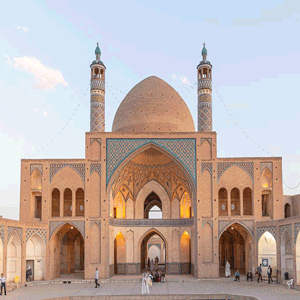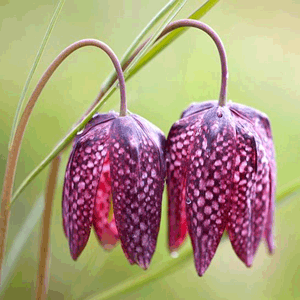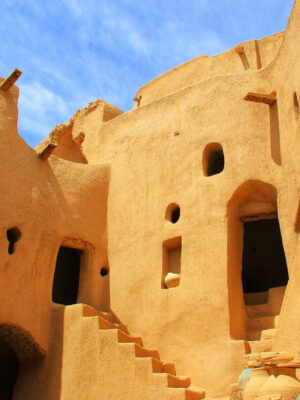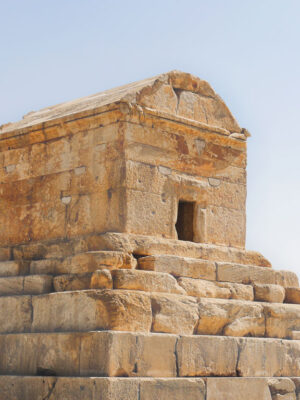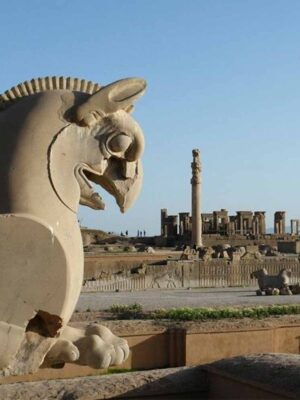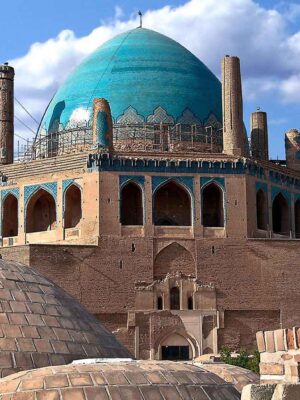Yazd
The capital of Yazd province, the Historic City of Yazd is located in the center of Iran, near the famous Spice and Silk Roads. A center of Zoroastrian religion, Yazd is one of the oldest cities in the world. It is architecturally unique, a city that developed and prospered by adapting to its desert surroundings. It is also famed in Iran for the high quality of its handicrafts, especially silk weaving, as well as for its sweet shops.
Yazd has a history of over 3,000 years, dating back to the time of the Median Empire, when it was known as Ysatis (or Issatis). The present city name has, however, been derived from Yazdegerd I, a Sassanid ruler (Sassanid dynasty ruled from 224 – 651 AD). Yazd was a Zoroastrian center during the Sassanid period. The word Yazd is related to the Avestan word “Izad” meaning divine. The Greeks knew the city of Yazd as Issatis, a city constructed on top of an older city called Katteh or Kaseh.

Yazd was visited by Marco Polo in 1272, who praised the city’s fine silk-weaving industry and its people, calling it “the good and noble city” with a great amount of trade. Yazd is also of prime importance as a major center of Persian architecture. Because of its arid climate, it has one of the largest networks of qanats (subterranean water canals) in the world, and Yazdi qanat artisans are considered the most skilled in Iran. The summers are extremely hot in Yazd so many old buildings in Yazd have magnificent windcatchers which function like a cooling system. It has been quoted from Sir Percy Sykes who visited Iran in 19th century that: “The windcatchers and Minarets in Yazd remind us of the story of A Thousand and One Nights”. The city is also home to prime examples of yakhchals, or ice storages, retrieved from glaciers in the nearby mountains.
Yazd
The capital of Yazd province, the Historic City of Yazd is located in the center of Iran, near the famous Spice and Silk Roads. A center of Zoroastrian religion, Yazd is one of the oldest cities in the world. It is architecturally unique, a city that developed and prospered by adapting to its desert surroundings. It is also famed in Iran for the high quality of its handicrafts, especially silk weaving, as well as for its sweet shops.
Yazd has a history of over 3,000 years, dating back to the time of the Median Empire, when it was known as Ysatis (or Issatis). The present city name has, however, been derived from Yazdegerd I, a Sassanid ruler (Sassanid dynasty ruled from 224 – 651 AD). Yazd was a Zoroastrian center during the Sassanid period. The word Yazd is related to the Avestan word “Izad” meaning divine. The Greeks knew the city of Yazd as Issatis, a city constructed on top of an older city called Katteh or Kaseh.

Yazd was visited by Marco Polo in 1272, who praised the city’s fine silk-weaving industry and its people, calling it “the good and noble city” with a great amount of trade. Yazd is also of prime importance as a major center of Persian architecture. Because of its arid climate, it has one of the largest networks of qanats (subterranean water canals) in the world, and Yazdi qanat artisans are considered the most skilled in Iran. The summers are extremely hot in Yazd so many old buildings in Yazd have magnificent windcatchers which function like a cooling system. It has been quoted from Sir Percy Sykes who visited Iran in 19th century that: “The windcatchers and Minarets in Yazd remind us of the story of A Thousand and One Nights”. The city is also home to prime examples of yakhchals, or ice storages, retrieved from glaciers in the nearby mountains.






